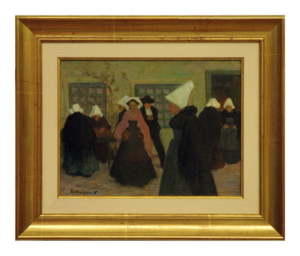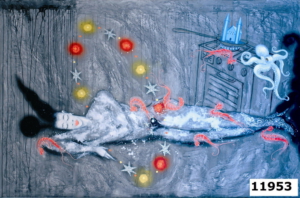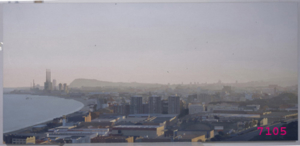BUSCAR PER:
Ceiling molding

Ceiling molding
1912Donated by Eulàlia and Esperança Busquets Martí
The La Sopera pasta factory began operations, according to the store’s lobby, in 1870. It did not yet have that name at the time.
Always located at 67-69 Carrer Reial – which would later be called Francesc Layret -, the first owner was Maria Folch Llampallas. At the end of the 19th century, the business was named after his son, Jaume Martí Folch.
On May 1st, 1909, the Boletín Oficial de la Propiedad Industrial (BOPI, no. 545) published the concession of the mark that had been requested by Josep Martí Duran, son of Jaume Martí, La Sopera. Fábrica de pastas y demás productos alimenticios para sopa, José Martí, as well as the image that will identify it until the closing of the business.
In November 1912, a license was requested to rebuild the facade of the building. The project, by Barcelona’s master builder Josep Codina Clapés, proposed a major refurbishment that renewed the entire façade from top to bottom, as it had to be set back in relation to the road. At the same time, and probably by the same author, the interior of the store was designed and executed, a space parallel to the street, rectangular in shape, made of wood and glass.
The roof of this space was decorated with these moldings that reproduce a field of ripe, golden wheat (the product with which the pasta is made), with some poppies.
The factory and shop were in operation until 1989 when it closed. It was at that time that the Museum of Badalona was able to recover and preserve the furniture and these moldings, restored in 2019.
Material: Molded plaster and burlap and tempera paint Dimensions: 72 x 76 cm Ref.: MB 18056 a 18059Altres peces del mateix període
Image of Britanny
First quarter of the twentieth century
The food revolt
1990-2005
The breakfast of the convalescent
First half of the twentieth century
Panoramic of Badalona
1999





